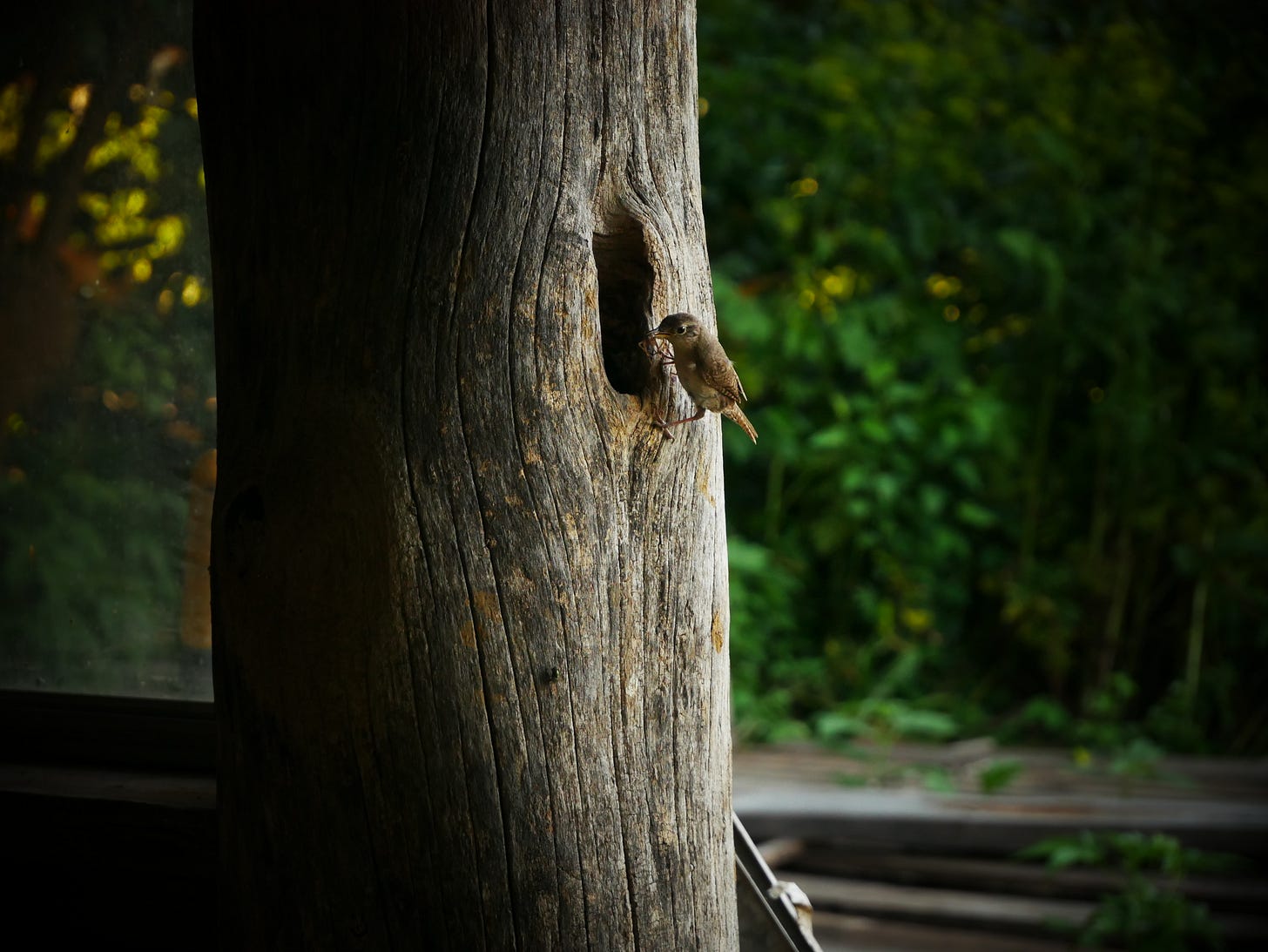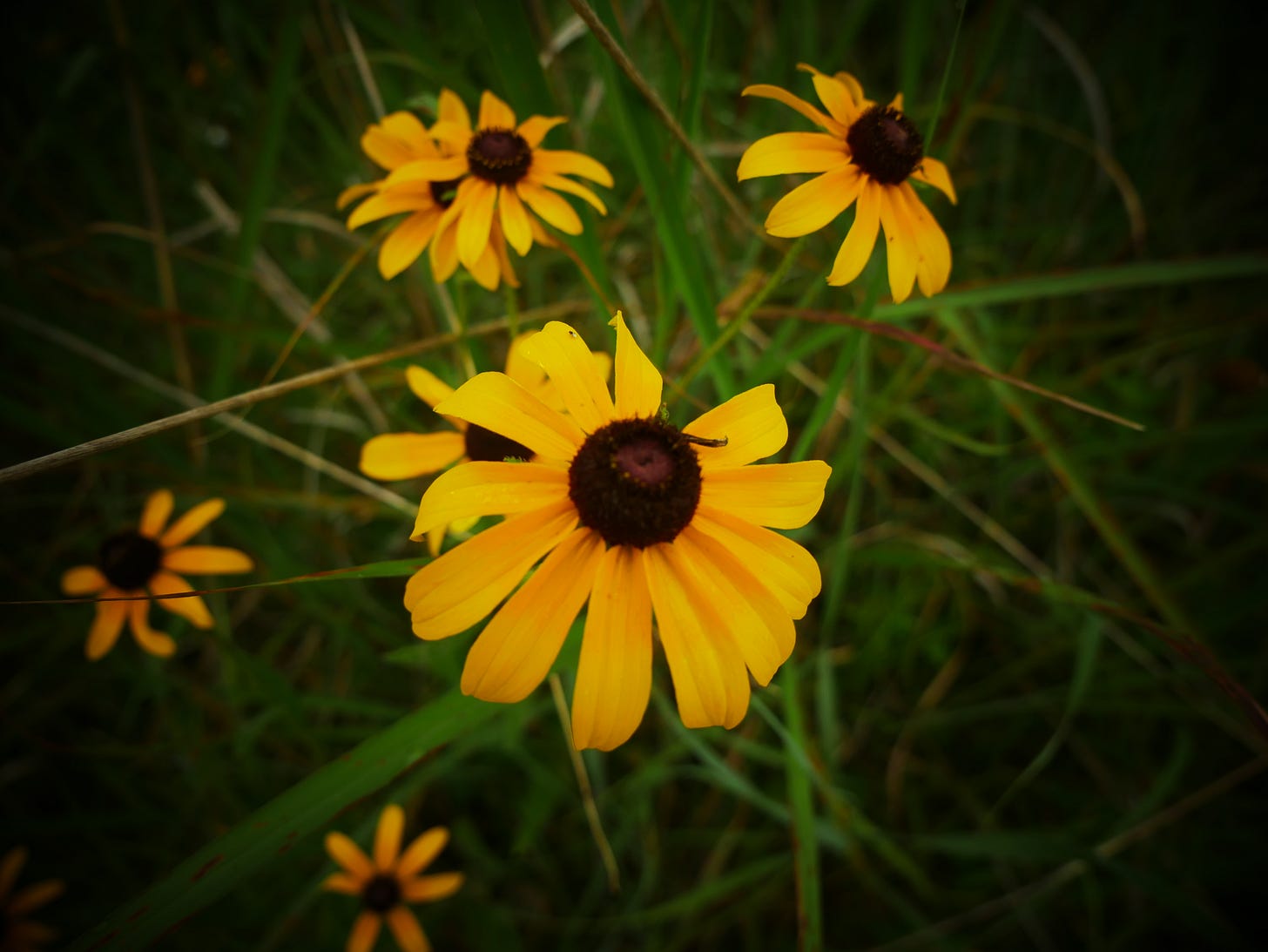House Wrens in a Paradise of Complaints
...or the privilege of land access
In the heat and corn-sweat, in a rotted out knothole that burrows into the east face of a black locust post, two or three helpless and naked northern house-wren chicks (Troglodytes aedon) silently widen their gaping beaks, while mother* wren flits and darts from the wet mud to the nest, tirelessly filling their maws with larvae, beetles, and spiders. She is occupied with this task for much of the day, foraging for food and feeding it to her young, ceaseless in her effort and care, except for the deepest afternoon heat. Her pattern is always the same– picking about in the wet leaves of mulberry and hedge for insects, then fluttering over to the a strategic Osage orange snag, where she can safely scan the periphery of the nest, then over to the knothole where she drops wriggling protein down the babies’ throats, down to the nearby mud, and finally, after being sure the coast is clear, back to the foliage of the old fence-row, squirming with life in the dappled shade and heat.
The house-wren could stand as the ultimate symbol of domestic order and toil. Her song is rich, bubbly, mellifluous, and is only heard at nesting season. An industrious wren can fledge a couple of clutches in our climate, before migrating for the winter. They are canny tenants, exploiting the nooks drilled out by woodpeckers in forested floodplains, if not rotting fence posts, old hats and bicycle helmets, or the pre-fabricated nests of other house wrens. They line these cavities –their genus name “Troglodytes” is derived from the Latin word for “hole dweller” – with a cup of bedding that can be composed of feathers, bark strips, cocoons, moss, roots, and often a pinch of anthropogenic microplastic. Prior to the lining, it is the male’s job to provide the initial framework of dry twigs. If mother wren is dissatisfied with the structure, she will tear out the offending sticks. The domestic life of northern house-wren parents is ceaseless work– avoiding predators, towing construction materials load by load, defensively singing to avoid ovicide by competing mother wrens, and of course the tireless retrieval of insect food until the young birds are prepared to fledge the nest hole.
A house wren observing me might note some similarities, as I cart my own resources hither and yon through the deer-paths and pasture lanes choked with the wet, rank growth of prairie grasses and thrumming stands of rudbeckia and ox-eye daisy. While unlike the wren, I do my best to keep bugs out of my mouth, I still manage to catch a few in there now and again as I roll my wheelbarrow full of grain and whey through the malarial haze of deep summer from site to site, flopping sloshy scoopfuls of the cheesy cereal mixture into feed pans for small militias of nipping ducks that advance from the shade of Eastern gama grass. From where the ducklings wait, near the front of our barnyard orchard, I roll steadily through to the assorted wagons and coops where gruff, broody hens grumble and peck. I transport buckets of clean water down along the brambled draws, amidst a dozen or two butterflies that I cannot (yet) identify, where a sisterhood of heaving, snoring hogs stumbles awake from the shade and buzz of white oak and cedar. I quench the swine, my puppy trailing me through the thick, flowering timothy grass that smokes with pollen, and then gather eggs from three different coops, returning to my own hole, up a well-trod path lined with broad-leaved plantain (also known as the “white man’s footprint” for it’s exotic, European origin and preference for arising along compacted footpaths of the sort that are only created by the consistent, toilsome treading afforded to us by capitalist economics).



